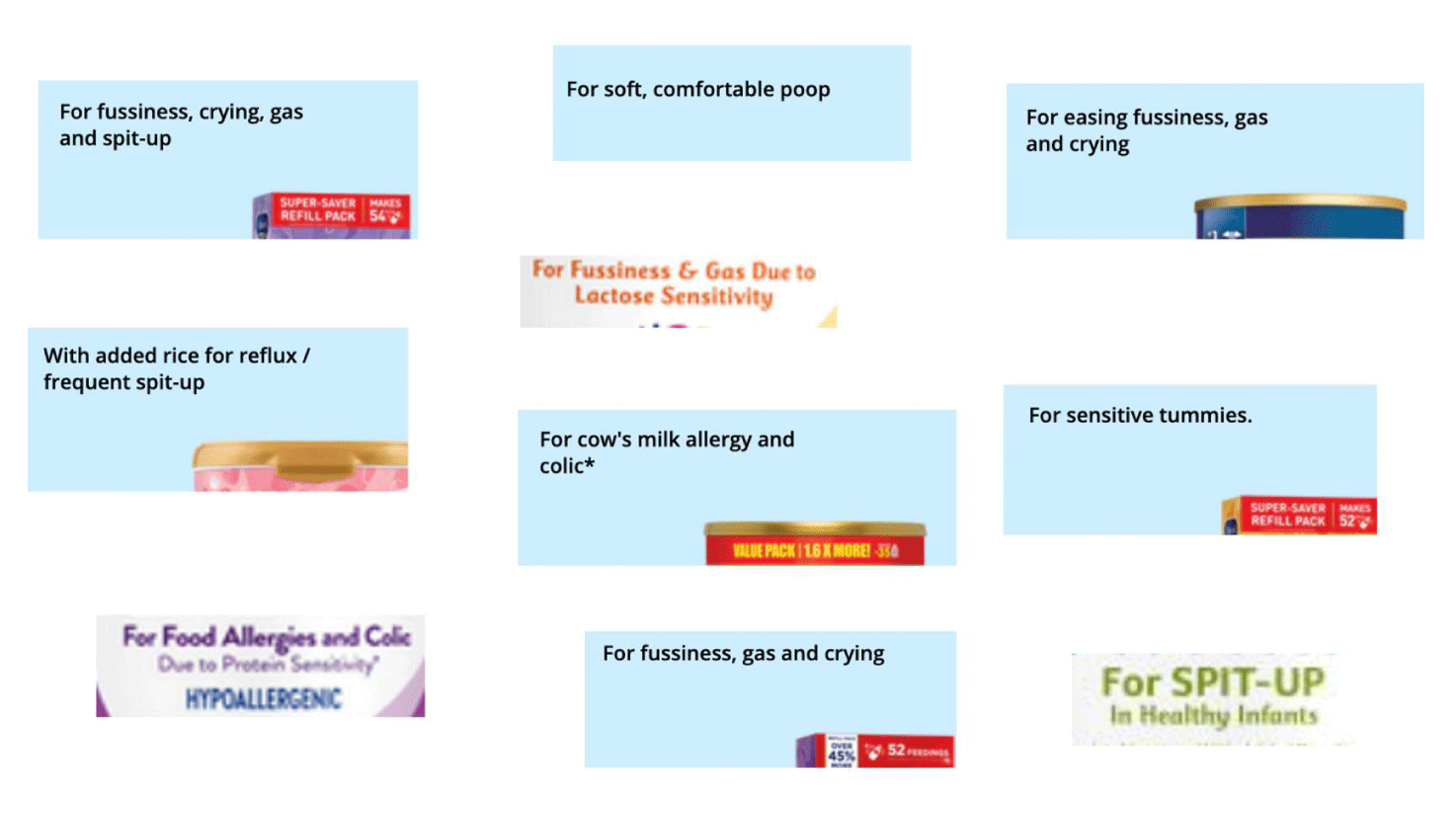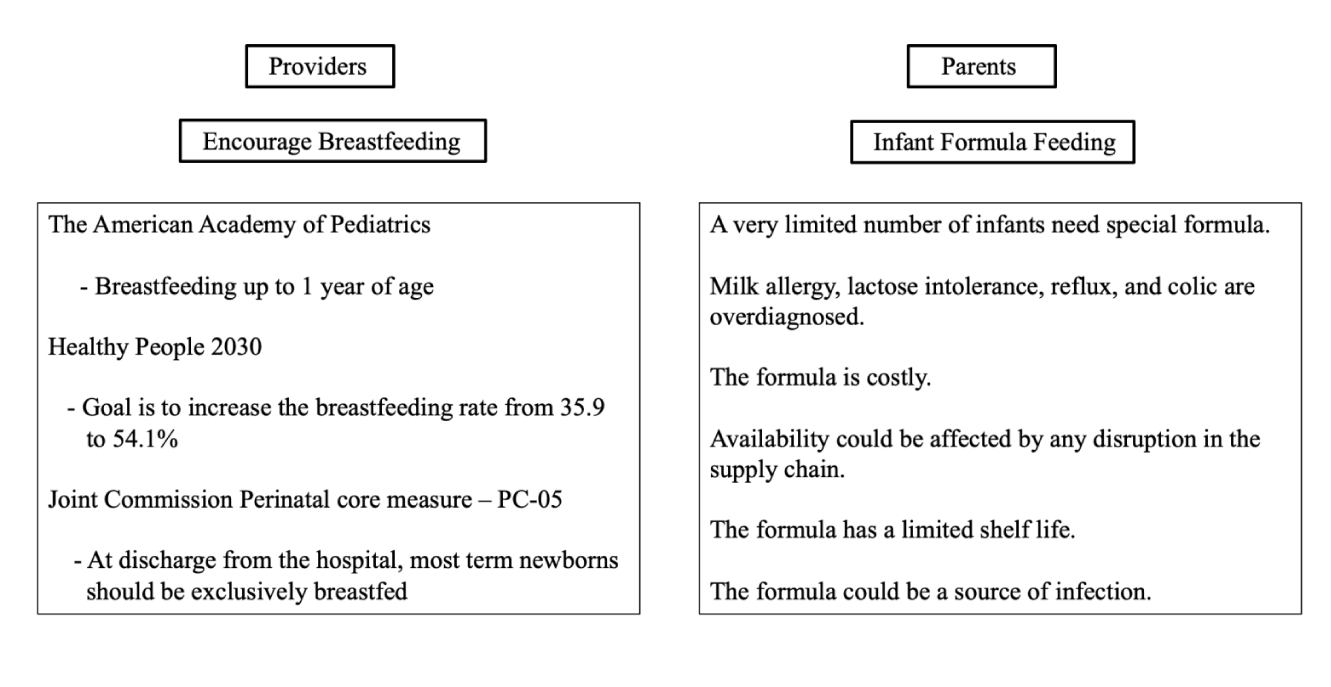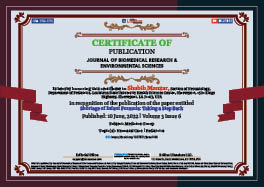Medicine Group . 2022 June 10;3(6):675-677. doi: 10.37871/jbres1496.
Shortage of Infant Formula: Taking a Step Back
Shabih Manzar*
Parents are devasted by the current shortage of the infant formula. There are many online resources addressing this issue. Using these, we have published summarized guidelines for the families to cope with the current shortage [1]. The US government has responded as well and ordered formulas from Europe to meet the demand and help families. While, we struggle with this crisis, it is time to step back and look at some facts, myths, and misinformation regarding the infant formulas.
The fact is that some infants suffer from severe allergies, renal failure, intestinal failure, and various metabolic disorders, needing specially modified infant formulas. Fortunately, these conditions are not that common. The four common conditions for which the main bulk of infant formulas are consumed included Cow Milk Allergy (CMA), Lactose Intolerance (LI), Gastrointestinal Reflux (GER), and colic (Figure 1). In many cases, the diagnosis of these conditions is made without concrete investigation. The frequent complaints are colic, emesis, and loose stool, which in certain cases are within normal limits. For example, the prevalence of CMA and LI varies depending upon the race, geographic location, age, and gut-brain axis [2-4]. It has been noticed that CMA, LI, GER, and colic are overdiagnosed, and many infants are placed on formula while they could easily continue with Breastfeeding (BF). Once, these infants are started on special formulas, it is very difficult to revert to BF.
In the US, an estimated 75% of mothers initiate BF; however, by 6 months only 15% breastfeed exclusively [5]. The American Academy of Pediatrics (AAP) recommends BF up to 1 year of age [6]. Among one of the proposed objectives for Healthy People 2030 is to increase BF from 35.9 to 54.1 % [7]. Exclusive BF is also a Joint Commission perinatal core measure-PC-05 [8]. Some families are reluctant to breastfeed because of social taboos and perceived barriers to BF. Awareness regarding BF has increased, and we see BF stations at the airports and pumping facilities at workplace. Recently, Ahmad, et al. [9] addressed the problem of BF among working mothers. They showed that support from spouses, families, and employers influenced working mothers' decision to breastfeed. Some parents decline BF because they have concerns about vitamin D and iron deficiency in their infants with exclusive BF. These issues are addressed by the AAP and could be easily managed by providing adequate supplementation.
While the government is taking action to fix the problem of formula shortage, healthcare providers should take some time to educate parents about the advantages of BF (Figure 2). Parents should be counseled about the overuse of infant formula for suspected allergy, intolerance, reflux, and colic. BF is a healthier and cheaper choice. The public, healthcare providers, and government have an equal role to play as they are all stakeholders in this endeavor. Except for very limited medical conditions and certain parents’ reservations, infant formulas could be substituted by BF. On the same topic, Abrams and Duggan [10] described three themes to deal with the shortage: public understanding of the shortage, decreasing risks of future similar events and supporting breastfeeding families.
Conflicts of Interest
I have no conflicts of interest relevant to this article to disclose.
Financial Funding/Disclosure
I have no financial relationships relevant to this article to disclose.
References
- Bolumen A, Juarez V, Cummins H, Manzar S. Food insecurity: Does infant formula shortage count? Neonatology Today May 2022;37-42.
- Flom JD, Sicherer SH. Epidemiology of Cow's Milk Allergy. Nutrients. 2019 May 10;11(5):1051. doi: 10.3390/nu11051051. PMID: 31083388; PMCID: PMC6566637.
- Usai-Satta P, Lai M, Oppia F. Lactose Malabsorption and Presumed Related Disorders: A Review of Current Evidence. Nutrients. 2022 Jan 28;14(3):584. doi: 10.3390/nu14030584. PMID: 35276940; PMCID: PMC8838180.
- Nurko S, Benninga MA, Solari T, Chumpitazi BP. Pediatric Aspects of Nutrition Interventions for Disorders of Gut-Brain Interaction. Am J Gastroenterol. 2022 Jun 1;117(6):995-1009. doi: 10.14309/ajg.0000000000001779. Epub 2022 Apr 13. PMID: 35416794.
- The Agency for Healthcare Research and Quality.
- The American Academy of Pediatrics.
- Healthy People 2030.
- Joint Commission Perinatal core measure -PC-05.
- Ahmad RS, Sulaiman Z, Nik Hussain NH, Mohd Noor N. Working mothers' breastfeeding experience: a phenomenology qualitative approach. BMC Pregnancy Childbirth. 2022 Jan 31;22(1):85. doi: 10.1186/s12884-021-04304-4. PMID: 35100980; PMCID: PMC8805408.
- Abrams SA, Duggan CP. Infant and child formula shortages: now is the time to prevent recurrences. Am J Clin Nutr. 2022 May 17:nqac149. doi: 10.1093/ajcn/nqac149. Epub ahead of print. PMID: 35580593.
Content Alerts
SignUp to our
Content alerts.
 This work is licensed under a Creative Commons Attribution 4.0 International License.
This work is licensed under a Creative Commons Attribution 4.0 International License.










